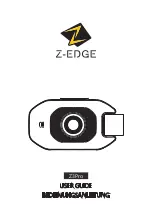
V1.02
Thom Hogan’s Complete Guide to the Nikon D300
Page 128
•
The camera’s electronics “reduce” the data set
. In
particular, tonal data is reduced from 12-bits to 8-bits in
the process of creating a JPEG or TIFF image. That’s not a
big issue if you never post-process your images, but it can
be if you make drastic changes in post-processing of the
image later on. Note that the D300 doesn’t reduce the
data set until it’s done manipulating the image. All in-
camera adjustments are made in 16-bits by the D300
48
.
Still, if you’re going to make any changes after the fact to
the image, 8-bit data storage is a limiting factor.
•
The camera uses the settings you made.
Make a mistake
on setting white balance, sharpening, or some other
camera setting? Well, with JPEG and TIFF that mistake is
encoded into the image file that’s created, and it’ll take
careful post-processing to take it back out (if that can be
done—not all such mistakes can be undone). NEF allows
you to alter many of your camera settings after you’ve
taken the picture.
If you’re getting the feeling that I’m strongly in favor of the
NEF format, you’re right. For serious photographers, shooting
in NEF is like retaining and working with a negative while
JPEG and TIFF is like accepting the print that comes out of the
lab. The reason most amateurs avoid NEF format is that they
don’t want to spend any time post-processing their images.
Likewise, some event photographers shoot so many images
that post processing all of them would take too much
computing power and time.
Fair enough. Just realize that you’re going to have to make
some choices about how you shoot with your D300, and the
48
It’s unclear exactly how the data goes from 12-bit to 16-bit internally. But a
commonly accepted programming practice is to place the 12-bits of data into the
highest order bits of a 16-bit field. Doing that one thing before doing any other
processing on the data would tend to reduce rounding errors that might occur as the
data is manipulated.
















































